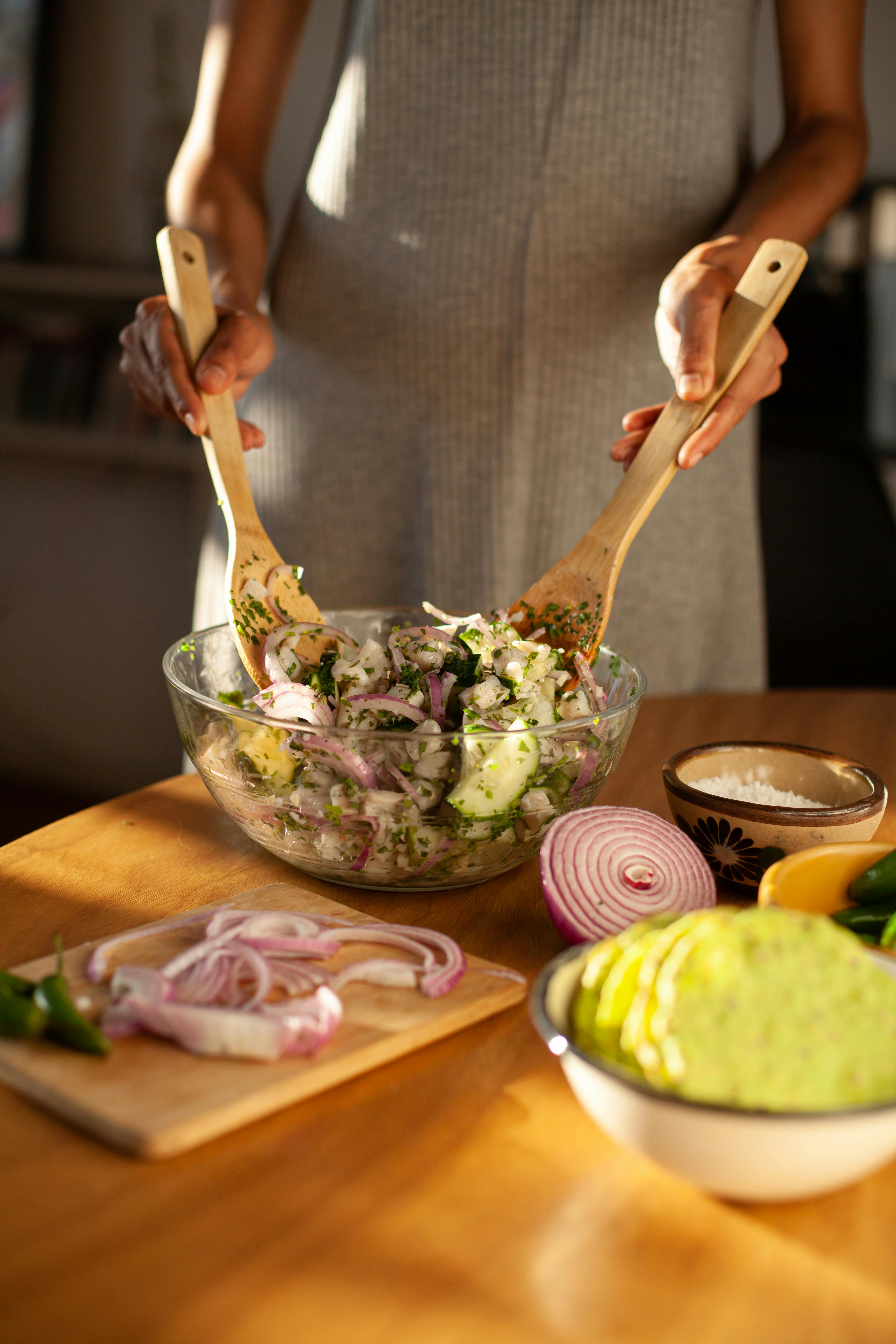Smart Ways to Optimize Lean and Green Meals for 2025
As we progress into 2025, the focus on healthy eating continues to rise, with an emphasis on lean and green meals. These meals encapsulate the essence of nutritious eating, balancing flavor, and health benefits. Lean meals, often low in calories yet high in essential nutrients, offer a fantastic way to maintain a balanced diet and facilitate weight loss. Green meals, rich in vegetables and plant-based ingredients, not only contribute to physical well-being but also to sustainable eating practices.
Adopting a meal prep strategy can simplify your cooking processes, allowing for a variety of meal ideas while ensuring that you incorporate wholesome ingredients. This article will explore smart ways to create nutritious meals that are both environmentally friendly and beneficial for your health. We'll cover meal planning, incorporating fresh produce, and techniques to maintain flavor while keeping meals low in calories. Let's embark on this culinary journey toward a healthier future!
Key Takeaways:
- Learn about the benefits of lean and green meals.
- Discover effective meal prep techniques.
- Explore various nutritious recipes that cater to different dietary needs.
Essential Strategies for Meal Prep in 2025
Meal prep has emerged as a crucial element in maintaining healthy eating habits. By preparing meals in advance, you can ensure portion control, reduce cooking times, and curtail food waste. Optimizing your meal prep can make healthy eating such as lean meals and green meals more achievable.
Understanding Portion Sizes for Balanced Nutrition
Practicing portion control is a fundamental strategy in meal preparation. It helps in preventing overeating and ensures that you get balanced nutrition. For lean meals, aim to fill half your plate with vegetables, a quarter with protein sources, and a quarter with whole grains. This simple guideline can help you create meals that are satisfying yet low-calorie.
Grocery Shopping List for Sustainable Eating
When embarking on a meal prep journey, your grocery shopping list should focus on fresh ingredients, seasonal vegetables, and whole foods. Prioritize organic meals and explore local farmer's markets to obtain nutrient-rich, locally-grown produce. Incorporating superfoods like quinoa, lentils, and leafy greens will enhance the nutritional value of your meals significantly.
Time-Saving Kitchen Tips for Quick Healthy Meals
Efficiency in the kitchen is essential for quick healthy meals. Invest in high-quality containers for meal storage, and consider batch cooking staple ingredients such as grains and proteins during the weekend. Pre-chop vegetables and store them in ready-to-use portions. These practices not only save time but also encourage the preparation of balanced meals throughout the week.
Flavor Profiles: Enhancing Your Meals Without Extra Calories
Flavoring your meals doesn't have to add calories. Instead, using herbs and spices can enhance the taste of your lean and green meals while keeping them nutritious. Exploring various flavor profiles can make your cooking endeavors dynamic and enjoyable.
Utilizing Culinary Herbs for Flavor Boosting
Culinary herbs such as basil, cilantro, and parsley can elevate the flavor without adding extra calories or unhealthy fats. They also come with numerous health benefits due to their antioxidant and anti-inflammatory properties. Homemade dressings, utilizing fresh herbs and wholesome ingredients, can be a delightful addition to salads or grilled vegetables.
Experimenting with Homemade Dressings
Creating your own dressings allows you to control the ingredients. Incorporate healthy fats like olive oil or avocado to make your dressings creamy without compromising nutritional values. Try combining vinegar with mustard and herbs to whip up vibrant dressings that will enhance your hearty salads.
Incorporating Flavorful Vegetables
Choosing colorful vegetables contributes not only to aesthetics but also to nutrient density. Bell peppers, carrots, and beets provide vivid colors and essential vitamins. Roasting these vegetables brings out their natural sweetness, making them a delicious addition to various meal combinations. When added to lean meals, they contribute to flavor while ensuring your meals remain low-calorie.
Nutritious Recipes for Balanced Low-Calorie Meals
Creating low-calorie meals does not mean sacrificing flavor or satisfaction. The focus should be on integrating wholesome and clean eating recipes that cater to diverse dietary needs.
High-Protein Plant-Based Meal Ideas
For those embracing plant-based diets, consider meals that are rich in protein. Incorporate ingredients like chickpeas, lentils, and quinoa, which are excellent protein sources. A hearty chickpea salad with avocado, vegetables, and a light dressing can serve as a delicious, filling meal. Such recipes are not only nutritious but also easy to prepare and enjoyable for the whole family.
Fiber-Rich and Vitamin-Rich Food Combinations
Fiber-rich ingredients keep you satisfied for longer and are crucial for digestive health. Combine beans, whole grains, and plenty of vegetables for meals that are filling. For vitamin-rich options, smoothie recipes can be a fantastic meal replacement. Filling your smoothies with spinach, fruits, and nut butter offers a nutrient-dense meal that provides energy-boosting benefits throughout your day.
Seasonal Meal Ideas for Fresh Eating
Leveraging seasonal vegetables not only enhances the flavors of your meals but also promotes sustainability. Plan your meals around what is in season; for instance, in spring, consider asparagus and peas in your dishes. These ingredients are often more flavorful and cost-effective when purchased locally, contributing to a healthier eating practice.

Exploring Meal Combinations for Wholesome Eating
Understanding how to effectively combine ingredients can create energy-boosting meals that encourage healthy eating patterns. This section looks at various meal combinations that can yield nutritious and satisfying results without straying from clean eating principles.
Mixing Whole Grains and Protein Sources
A balanced meal should include both protein sources and whole grains. Combining farro with roasted chicken and vegetables can create a filling, nutritious dish. This not only lends the dish a hearty texture but provides essential nutrients and aids in meal planning.
Vegetarian Meal Options for Everyone
Vegetarian recipes can cater to all taste preferences. Explore integrating legumes into your meals to create flavorsome, protein-packed options. Dishes such as vegetable stir-fries combined with tofu or tempeh provide excellent flavor and nutrition, making mealtime exciting and healthy.
Advanced Meal Prep Techniques
Explore new cooking methods to diversify your meals. Grilling, steaming, and boiling help maintain the nutrient profiles of ingredients without adding excess fat. These techniques align well with energy maintenance and weight management goals. Shared meal preparation amongst family members also cultivates mindful eating habits, allowing everyone to engage with the cooking process.
Mindful Eating and Its Impact on Weight Management
Mindful eating is a key aspect of healthy eating habits. By paying attention to what and how we consume, we can enhance our dining experiences and improve our overall health.
Mindful Eating Tips for Sustainable Habits
Adopt techniques such as slow eating, appreciating flavors, and being aware of portion sizes to develop sustainable eating habits. When you savor each bite, you are less likely to overindulge. Keeping a food journal may help track food intake and highlight areas for improvement in your diet.
Health-Conscious Cooking Techniques
Caring for your body through healthy cooking techniques can make the process enjoyable. Exploring ways to enhance flavor profiles while eliminating unnecessary calories can excite your palate. Focus on whole foods rather than processed counterparts for a dietary approach that supports long-term wellness journeys.
Implementing Food Tracking for Improved Nutrition
Food tracking can help maintain awareness of nutrient intake and promote healthier meal combinations. Consider using apps that help monitor your meals, making it easier to stay on track with health goals related to weight loss or nutrient density.

Q&A: Common Questions About Lean and Green Meals
What are lean and green meals?
Lean meals typically feature proteins that are low in fat, while green meals focus on incorporating abundant vegetables. Both styles emphasize healthy eating and sustainability.
How can meal prep help with weight loss?
Meal prep can support weight loss by enabling you to plan balanced meals with controlled portions, ultimately minimizing unhealthy snacking and impulsive eating.
What are some quick and healthy meal ideas?
Examples include salads with mixed greens, grilled chicken with seasonal vegetables, and quinoa bowls topped with roasted chickpeas. Such meals can be prepared quickly and are packed with nutrients.
How can I make my meals more flavorful without adding calories?
Using herbs, spices, and homemade sauces can enhance the flavors of your meals without extra calories. Experimenting with various cooking methods also helps in achieving the desired taste.
What role do superfoods play in a balanced diet?
Superfoods, such as kale, quinoa, and berries, are nutrient-dense foods that contribute to a balanced diet, offering vitamins, minerals, and antioxidants essential for overall health.
